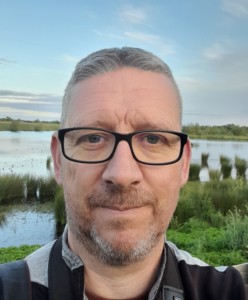The BOU Records Committee (BOURC) is responsible for maintaining the British List, the official list of birds recorded in Britain.
Members are appointed by the Council of the BOU and come from a diverse background of ornithology and birding and include a Chair, a Secretary, the Chair of British Birds Rarities Committee (BBRC) and at least five Ordinary Members.
The Committee is a well-balanced team of birders with international ornithological and birding experience and knowledge, and includes both professional and amateur ornithologists. Skills of individual members include detailed knowledge of bird distribution, taxonomy, statistics, the wild bird trade, genetics and historical research. Expertise in bird identification and vagrancy is also extremely important. The ability to handle regular batches of paperwork, often of a detailed and complex nature, and to do so promptly and reliably, are key qualities. The work is entirely voluntary and unpaid.
Committee members
Dr Alexander Lees
Chair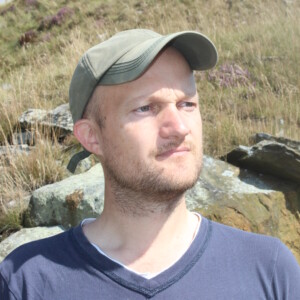
Alex is a Reader in biodiversity at Manchester Metropolitan University, working principally on the impacts of land-use change on bird populations. He has long maintained an interest in avian vagrancy and with James Gilroy recently authored the first book on the subject. As well as serving on the British Ornithologists’ Union Records Committee (BOURC) he is a member of the United Nations Science Panel for the Amazon, the IUCN Species Survival Commission Red List Authority and the Manchester Biodiversity Action Group. He recently retired from the Brazilian Ornithological Records Committee.
Follow Alex Twitter @Alexander_Lees
Chris Batty
Secretary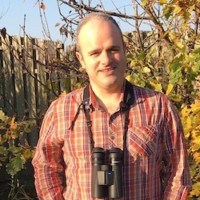
Chris developed a diverse interest in birds from an early age and as well as a natural enthusiasm for rarities he is a trained ringer and has enjoyed roles as both local bird recorder and report editor on the Fylde, Lancashire, where his lifetime’s local birding was rewarded with the discovery of Britain’s third Great Knot on his childhood patch. After graduating in Ecology at the University of East Anglia Chris completed a further degree and worked for the RSPB before returning to Rare Bird Alert where more than twenty years of service have given him a sound knowledge of the British birding scene that, alongside a wide range of identification interests, was recognised by his election to the British Birds Rarities Committee on which he has now served for twelve years. Although having travelled extensively throughout much of the Western Palearctic Chris is now more likely to be found at home where he monitors bird migration through automated sound recordings.
Ross Ahmed
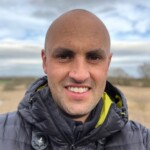
Ross began birding over 30 years ago (when 11 years old) and has worked as a field ornithologist for the last 15 years. Although he enjoys the challenge of finding birds in the field, particularly at his adopted patch of Holy Island and Lindisfarne NNR in Northumberland, he also spends many hours sat in front of a computer analysing ornithological data. Ross particularly enjoys looking at numerical data in R to delve deeper into aspects such as bird distribution and identification. Lindisfarne NNR was also his study site for an MPhil on Brent Goose at Newcastle University, which he completed in 2015. He serves on both the Northumberland and Durham records committees currently. First bird records include first national records of Franklin’s Gull for Kazakhstan and Black-headed Heron for Saudi Arabia, and the first county records of Little Bunting for Bedfordshire and Two-barred Warbler for Northumberland.
Follow Ross on Twitter @RossAhmed
Dr Pierre-André Crochet
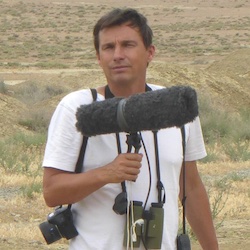
Pierre-André (aka PAC) is a scientist, keen birder and herpetologist, and avid twitcher. He holds a position at the French National Centre for Scientific Research (CNRS) in Montpellier, France and works on a wide variety of subjects, including the biogeography and genomics of speciation, the evolutionary bases of phenotypes and behaviours, systematics and conservation. His favourite models are birds, amphibians and reptiles of the Western Palearctic (WP). As a birder, he is mainly interested in identification and searching for rare birds. He is keen enough on his WP bird list to have turned into a WP twitcher since his late thirties and his quest for WP species has taken him to most corners of the region. He has been or is a member of several taxonomic committees providing recommendations on birds and herptiles systematics and he serves on the Portuguese, Egyptian and French rarities committees as well as the French Avifaunistic Committee. He now lives in Montpellier and spends a large part of his free time birding the coast of southern France between the Camargue and the Spanish border.
Mark Golley
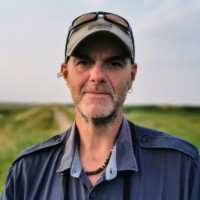
Mark has been watching birds for as long as he can remember, starting with Bullfinches and Buzzards at his childhood home in west Devon through to his present-day base, of over 30 years, on the north Norfolk coast.
After leaving school, where he would take several unscheduled days off travelling for rare birds, Mark began a career in conservation, working for a season at Gibraltar Point NNR, before heading to the famous Cley Marshes in 1990, where he spent four years as the reserve’s Assistant Warden.
A significant career change saw Mark eventually move into the media, where he remains to this day, as a freelance producer, working on many famous sports programmes and events, from Match of the Day to football World Cups and Euros to Super Bowls, Wimbledon, the Olympics and test match cricket. When not working on sport broadcasts, there’s plenty of in-field time in TG04, the Cley square.
A passion for rarities, their identification and vagrancy developed in his formative years and is still part and parcel of Mark’s birdwatching. He spent several years writing Rare Bird Alert’s weekly rarity roundup where factual analysis and personal anecdotes were melded together, every seven days, into multi-thousand word essays.
Currently in his second five-year term on the Norfolk Records Committee, Mark has written several “entry-level” books on birds, as well as numerous identification articles, (primarily for Birding World magazine), which culminated in a privately published labour of love detailing the field identification of Icelandic and ‘Continental’ Black-tailed Godwits. He has found several county firsts in his adopted home across the last three decades, including Desert Warbler to Red-necked Stint.
It isn’t all birds though. Mark has wide ranging interests within the natural world, focusing nowadays on moths, along with butterflies, dragonflies and plants (especially orchids).
And it’s not all Norfolk either. During the last decade Mark has returned, on numerous occasions, to Fair Isle, a place he first visited in the late 1980s then didn’t return to for over 25 years.
Follow Mark on Twitter @vaasetter
Andrew Holden
British Birds Rarities Committee
Andrew was interested in birds from a very young age and this soon developed into an interest in British rarities. Travel within Britain led him to his favourite place – the Isles of Scilly, where he is a serving member of the Scilly Rarities Committee. Extensive travel further afield, within the Western Palearctic and elsewhere, was largely focused on seeing species recorded as rare vagrants within Britain. His main interests are migration, vagrancy and identification, with his interest in the latter being reflected in serving as a voting member of the British Birds Rarities Committee, which he represents here in an ex officio role.
Mark Thomas
Originally from Sheffield, Mark is an experienced birder and A permit ringer with a particular passion for migration and weather. Mark has travelled extensively, including spending a month in Mongolia in 2004. His student years were spent twitching but for the past three decades Mark has been dedicated to his patch at Buckton on the East Yorkshire coast and has just published the ‘Birds of Buckton’ – a book reviewing the last 50 years of birding at the site including a finders account of last years Green Warbler. Professionally, Mark has a BSc(Hons) in Environmental Management and is currently Head of Investigations at the RSPB, a team he has worked in for the past 22 years dealing with rare breeding birds, egg collecting and raptor persecution.
Dr Jane Turner
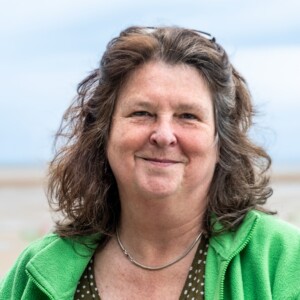
Jane, a molecular biologist by training, has been passionate about birding since childhood. At 15, she discovered her first rare bird, a Long-tailed Skua, and shortly thereafter found a Great Spotted Cuckoo. With a keen interest in migration patterns, her passion evolved into pre-emptive twitching. However, in recent years, she has committed to being a zero-carbon birder in Cheshire, which has limited her ability to add to her self-found list, currently at 299.
Sea-watching is a favoured activity, though observing visible migration brings the greatest pleasure. She serves as the county recorder for Cheshire and Wirral. Over time, she has developed a deep interest in bird taxa with complicated taxonomic positions, particularly Redpolls and Chiffchaffs. Additionally, she is fascinated with geographic variation in Dunlin and the Rock/Water/Siberian/Buff-bellied Pipit complex.
As a licensed BTO ringer and a member of the trainer’s panel, she requalified after a 21-year hiatus induced by family life. The desire to understand the complex variety of Redpolls visiting her garden in late spring was a significant motivation for retraining.
Dr Leila Walker
Chief Operations Officer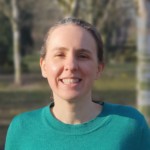
Leila has responsibility for the day to day management and running of the BOU including conferences and events, the business side of the BOU’s journal, IBIS, social media and communications, website development and content management and servicing BOU Council and its Standing Committees.
Category F Sub-committee
Prof Umberto Albarella

Umberto is Professor of Zooarchaeology at the University of Sheffield. He studied Natural Sciences at the University of Naples (Italy) and obtained his PhD from the University of Durham. He has also worked at the Universities of Lecce (Italy), Birmingham and Durham, as well as for English Heritage. His main areas of research include domestication, pastoralism, ethnography and the social and ritual symbolism associated with animals. In the field of ornithology, he has worked on the history of British birds, the development of identification methods for the study of bird bones, and the relationship between the study of past bird populations and current conservation concerns. His work is predominantly based in Britain and Italy, but he has also worked in Armenia, Greece, the Netherlands, Germany, Switzerland, France and Portugal. Within archaeology, he has been an advocate for global and social justice.
Joanne Cooper
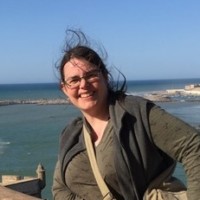
Joanne is a senior curator in the Birds Curation Group of the Natural History Museum. She is responsible for the avian anatomical collections, including both the skeleton and spirit collections, some 35000 specimens in total. Joanne’s enthusiasm for birds started at the tender age of 6, but she followed a rather circuitous route to her current post through a degree in geography and geology before researching the Late Pleistocene bird communities of Gibraltar for her PhD. A developing interest in the subfossil birds of the Chatham Islands took her to the Museum of New Zealand Te Papa Tongarewa for almost a year before returning to the UK and the Natural History Museum as curator of the skeleton collection. With over 20 years working with these specimens, she has become an internationally recognised authority in avian osteology, with particular experience and expertise in the taxonomic identification of bird bones. This leads into her research interests in environmental and archaeological interpretation of ancient bird assemblages, for example Late Pleistocene birds from eastern Morocco and Ancient Egyptian raptor mummies. In all cases, a crucial aspect of her research is understanding how ancient records of bird species can inform our understanding of modern birds and their distribution.
Dr Dale Serjeantson
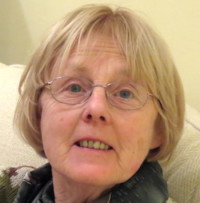
Dale is a zooarchaeologist who specializes in the analysis of bird remains from archaeological sites. Her expertise is in the distribution of birds in Britain as reflected in the archaeological remains and the social and economic significance of birds in the past. Topics that she has researched include the exploitation of seabirds in the British Isles, the significance of corvids to prehistoric societies, the extinction of the Great Auk, the former occurrence of Fea’s Petrel in Scotland, and the historic extinction in Britain of the White-tailed Eagle, Common Crane, Dalmatian Pelican and White Stork. She is the author of the Cambridge Manual in Archaeology: Birds. This book, which has world-wide scope, is a guide to the identification and analysis of archaeological bird bones; it also discusses the varied relationships between birds and humans in the prehistoric and early historic past. Dale was a Research Fellow at the University of Southampton until her retirement and is now a Visiting Fellow there.
BOURC consultants
Steve Dudley (Category C consultant; former BOU Chief Operations Officer)
Bob McGowan (Nation Museum Scotland – museum consultant)
Keith Naylor (Historical records consultant)



